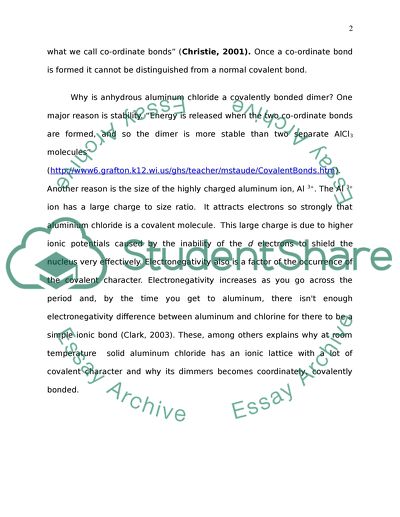Why is anhydrous aluminum chloride a covalently bonded dimer Essay. Retrieved from https://studentshare.org/chemistry/1499869-why-is-anhydrous-aluminum-chloride-a-covalently-bonded-dimer
Why Is Anhydrous Aluminum Chloride a Covalently Bonded Dimer Essay. https://studentshare.org/chemistry/1499869-why-is-anhydrous-aluminum-chloride-a-covalently-bonded-dimer.


